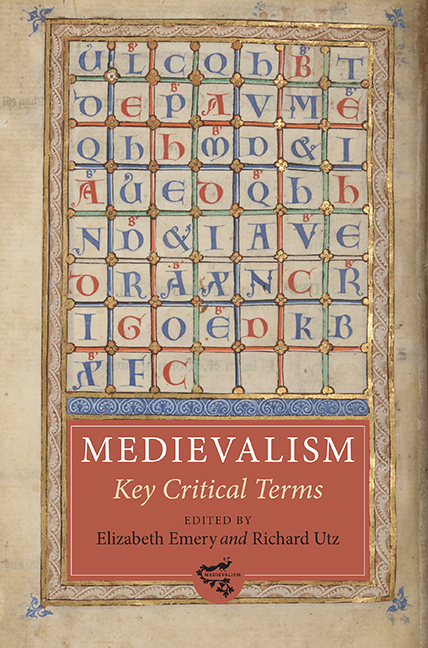Book contents
- Frontmatter
- Dedication
- Contents
- List of Illustrations
- List of Contributors
- Making Medievalism: A Critical Overview
- 1 Archive
- 2 Authenticity
- 3 Authority
- 4 Christianity
- 5 Co-disciplinarity
- 6 Continuity
- 7 Feast
- 8 Genealogy
- 9 Gesture
- 10 Gothic
- 11 Heresy
- 12 Humor
- 13 Lingua
- 14 Love
- 15 Memory
- 16 Middle
- 17 Modernity
- 18 Monument
- 19 Myth
- 20 Play
- 21 Presentism
- 22 Primitive
- 23 Purity
- 24 Reenactment
- 25 Resonance
- 26 Simulacrum
- 27 Spectacle
- 28 Transfer
- 29 Trauma
- 30 Troubadour
- Index
- Medievalism
7 - Feast
Published online by Cambridge University Press: 08 October 2022
- Frontmatter
- Dedication
- Contents
- List of Illustrations
- List of Contributors
- Making Medievalism: A Critical Overview
- 1 Archive
- 2 Authenticity
- 3 Authority
- 4 Christianity
- 5 Co-disciplinarity
- 6 Continuity
- 7 Feast
- 8 Genealogy
- 9 Gesture
- 10 Gothic
- 11 Heresy
- 12 Humor
- 13 Lingua
- 14 Love
- 15 Memory
- 16 Middle
- 17 Modernity
- 18 Monument
- 19 Myth
- 20 Play
- 21 Presentism
- 22 Primitive
- 23 Purity
- 24 Reenactment
- 25 Resonance
- 26 Simulacrum
- 27 Spectacle
- 28 Transfer
- 29 Trauma
- 30 Troubadour
- Index
- Medievalism
Summary
WHEN ANTIQUARIANS OF the eighteenth and nineteenth centuries first began to investigate the history of medieval food and eating, they stared in appalled fascination at the menus they discovered. It was not the number of dishes that disturbed them, or the heavy preponderance of meat, poultry, game, or fish, for these features remained typical of European dining in wealthy households and on grand occasions. Rather, they were horrified at what they saw as a promiscuous jumble of foods served in a distastefully foreign form. Richard Warner, for example, who in 1791 published an edition of the medieval English recipe collection called the Forme of Cury, commented that the fashionable French cooks of Richard II's court, to whom the collection was attributed, “appear to have equaled their descendants of the present day, in the variety of their condiments, and in their faculty of disguising nature, and metamorphosing simple food into complex and non-descript gallimaufries.” The French antiquary Alfred Franklin (1830–1917), who published extensively on daily life in medieval Paris, believed that the various dishes that made up each course in a formal medieval meal were heaped together helter-skelter on enormous platters in a “hideous salmagundi” (affreux salmigondis).
Such views were not wholly abandoned by scholars until late in the twentieth century, and they continue to color depictions of medieval feasts in popular culture to the present day. So, too, does the Victorian idealization of medieval feasting as representative of a pre-industrial age of gallant knights and beautiful ladies, and the modern belief that medieval feasts were uninhibited food-fights, in which diners slurped, slobbered, belched, fought, and gobbled their way through enormous joints of meat and massive flagons of wine and ale. From Victorian novels to Hollywood films, and from Gary Larson's Far Side cartoons to themed restaurants featuring “medieval banquets” complete with jousting, the medieval feast has served as a lens through which people could view the past either as a symbol of lost aristocratic splendor, or as a barbarous but entertaining spectacle.
In medieval Europe, rich and poor alike took a strong interest in feasts. Great feasts were historic occasions, marking major public events such as coronations, royal weddings, or the enthronements of bishops. The cult of celebrity was strong, and people of all ranks enjoyed hearing about the luxuries enjoyed by the wealthy and powerful.
- Type
- Chapter
- Information
- Medievalism: Key Critical Terms , pp. 63 - 70Publisher: Boydell & BrewerPrint publication year: 2014

